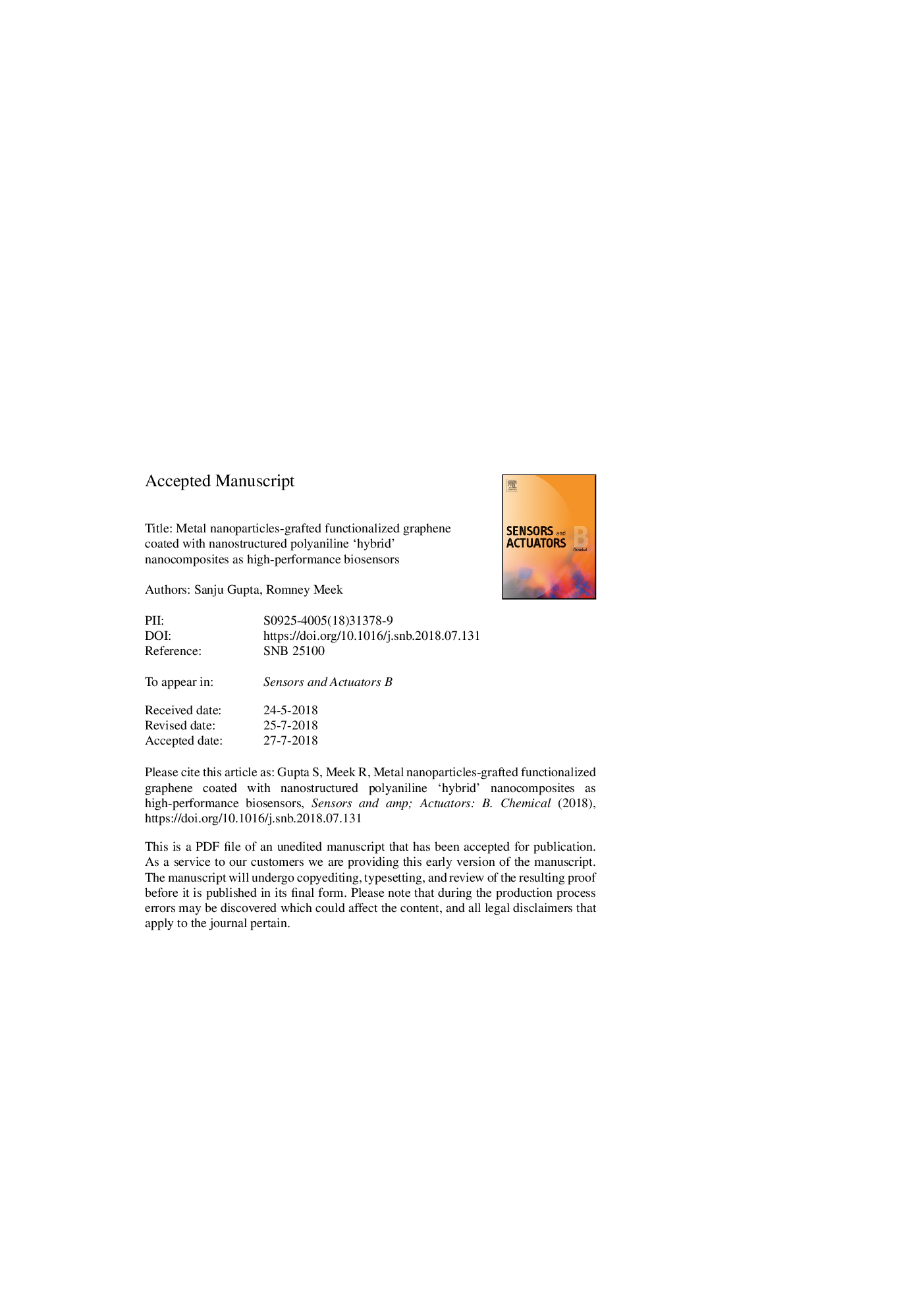| Article ID | Journal | Published Year | Pages | File Type |
|---|---|---|---|---|
| 7138606 | Sensors and Actuators B: Chemical | 2018 | 50 Pages |
Abstract
Metal nanoparticles-grafted functionalized graphene nanosheets with nanostructured polyaniline (PANi) 'hybrid' nanocomposites for ascorbic acid (AA) sensing is developed. The versatility of the nanocomposite performance was corroborated by altering size and density of electrodeposited gold (AuNP) and silver (AgNP) nanoparticles on the graphene oxide; GO, thermally reduced GO; rGOth and nitrogenated functionalized graphene; NFG. These noble metal nanoparticles are selected due to higher electrical conductivity, facile synthesis, processability and antimicrobial nature. The multilayers (PANi|AgNP|GFN and PANi|AuNP|GFN) on fluoride-doped tin oxide (FTO) coated glass, graphite foil (GF) and graphene rod (GR) electrodes were tested that show increased electrical conductivity and reduced charge transfer resistance. We demonstrated ultrasensitive detection of AA analyte over full range (from 1âÃâ10â12 M to 10âÃâ10â3 M) with linear sensitivity 10âmA mMâ1âcmâ2 and excellent limit of detection < 1âpM having high signal-to-noise ratio following PANi|AuNP|NFGââ¤âPANi|AgNP|NFGâ<âAuNP|NFGâ<âAgNP|NFG. Specificity of the biosensor is assessed by interfering species commonly found in blood serum i.e. glucose (Glu) and uric acid (UA). We attribute these findings to synergistically coupled metal nanoparticles and functionalized graphene promoted localized orbital re-hybridization and heterogeneously integration with PANi. These multilayer 'hybrid' nanocomposite electrodes are also useful for platinum-free electrocatalysis, pseudocapacitors and biofuel cell development.
Related Topics
Physical Sciences and Engineering
Chemistry
Analytical Chemistry
Authors
Sanju Gupta, Romney Meek,
